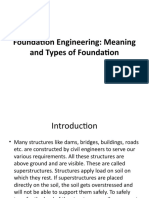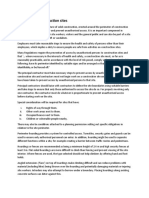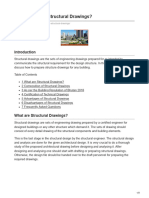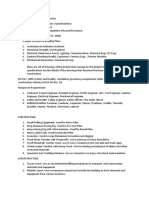0% found this document useful (0 votes)
1K views2 pagesBuilding Code Requirement For Foundations
The document outlines building code requirements for foundations in Kenya. It states that foundations must be structurally sound, made of materials like concrete and stone depending on soil conditions, and deep enough below the frost line with adequate drainage. It provides specifics on continuous strip, pad, raft, and pile foundations, noting requirements for thickness, depth, width, and load-bearing capacity depending on the foundation type and soil factors. The document stresses the importance of soil testing and following local regulations.
Uploaded by
Robert YegonCopyright
© © All Rights Reserved
We take content rights seriously. If you suspect this is your content, claim it here.
Available Formats
Download as DOCX, PDF, TXT or read online on Scribd
0% found this document useful (0 votes)
1K views2 pagesBuilding Code Requirement For Foundations
The document outlines building code requirements for foundations in Kenya. It states that foundations must be structurally sound, made of materials like concrete and stone depending on soil conditions, and deep enough below the frost line with adequate drainage. It provides specifics on continuous strip, pad, raft, and pile foundations, noting requirements for thickness, depth, width, and load-bearing capacity depending on the foundation type and soil factors. The document stresses the importance of soil testing and following local regulations.
Uploaded by
Robert YegonCopyright
© © All Rights Reserved
We take content rights seriously. If you suspect this is your content, claim it here.
Available Formats
Download as DOCX, PDF, TXT or read online on Scribd
/ 2



























































